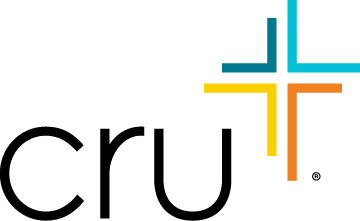Digital Missionary - disciple-makers, guides, innovators, influencers, and technologists engaged in missions using digital tools, whether that’s by using a digital evangelism tool, being an e-mentor, participating in a digital outreach, or using their digital talents.
Digital Strategist - anyone who is growing in digital maturity, creating win-build-send user journeys to reach people online, and mobilizing digital missionaries
Digital Maturity - the process of growing in the ability to maximize the use of digital resources and tools for the accomplishment of the mission. It includes deploying transformational leadership principles along with an integrated digital content strategy to reach audiences, as well as using analytics and at least one other tool from the Growth Stack to increase effectiveness.
Integrated Digital Content Strategy (IDCS) - delivering the right content at the right time for the right person or audience in the right channel. This makes use of Cru’s digital ecosystem and the Cru Growth Stack.
User Journey - a sequence of experiences designed to guide a user on a pathway towards spiritual multiplication, beginning with wherever they might currently be on that journey.
Digital Ecosystem - this is all of the Cru-owned apps, websites, tools, social media channels, etc. that allow us to journey together with our users.
Scale of Belief - our simple grid for understanding where a user is on his or her spiritual journey, which helps us understand how to help them move toward Jesus. The four main categories are unaware/content, curious, follower, guide. Users in the unaware or curious group are not yet followers of Christ, whereas followers and guides are.
Growth Stack - this is our set of powerful marketing tools that allow you to help your audiences take the best next step in their faith journey. It includes tools for email/campaign management, social media management, analytics, content management systems, and personalization.
Stakeholder - This simply means any individual, group, or organization that has a vital interest or stake in whatever ministry endeavor or project is at hand.
Product - Any software, tool, app, or platform used in digital ministry. We usually use this word about our ministry apps or Growth Stack tools, although it can be broader than that.
Product Owner/Manager - The person who is the bridge between the strategy side (stakeholders) and the delivery side (engineers, UX designers, etc.). It is their job to ensure that the product helps make progress toward defined ministry goals. Each of the Growth Stack tools has a product owner/manager, for example. In industry, these are two distinct roles, but in Cru, we use them a bit more interchangeably.
Digital Maturity Acronyms
(most definitions are taken and adapted from Wikipedia)
CMS – A content management system (CMS) is a computer application that allows storing, organizing, publishing, and editing of content as well as maintenance from a central interface. Most enterprise-level CMS systems include Web-based publishing, format management, revision control (version control), indexing, search, and retrieval. Cru’s suite of CMS tools includes Adobe Experience Manager and Wordpress. The CMS needed for a particular situation depends on the use case.
CRM – Customer relationship management (CRM) is a tool used to manage a company’s interactions with current and future customers. It involves using technology to organize, automate, and synchronize sales, marketing, customer service, and technical support.
CTA – A call to action, or CTA, is a banner, button, or some type of graphic or text on a website meant to prompt a user to click it and continue down a marketing funnel of increased engagement. It is an essential part of inbound marketing as well as permission marketing in that it actively strives to convert a user into a lead and later into a customer. The main goal of a CTA is a click.
CTR – Click-through rate (CTR) is a method of measuring the success of an online advertising campaign for a particular website as well as the effectiveness of an email campaign by counting the number of users that clicked on a specific link.
DAM – Digital asset management (DAM) is a broad term. It relates to the processes of managing tasks and decisions surrounding the ingestion, annotation, cataloging, storage, retrieval, and distribution of digital assets. It can also (and sometimes more frequently) refer to the software that enables these processes. Media asset management (a sub-category of DAM) includes things like digital photographs, animations, videos, and music. The term "digital asset management" (DAM) also refers to the protocol for downloading, renaming, backing up, rating, grouping, archiving, optimizing, maintaining, thinning, and exporting files.
KPI - A Key Performance Indicator is a measurable value that shows how effective your strategies are at making progress towards your key ministry objectives in your digital campaign. You can learn more about this in the marketing and analytics sections.
LMS – A Learning Management System (LMS) is a software application for the administration, documentation, tracking, reporting, and delivery of e-learning education courses. Moodle is an example of a broadly-used LMS.
SEO – Search engine optimization (SEO) is the process of affecting the visibility of a website or a web page in a search engine's unpaid ("organic") search results. The higher your content appears in general, the earlier (or higher ranked on the search results page), and more frequently a site appears in the search results list, the more visitors it will receive from the search engine's users.
SEM – Search engine marketing (SEM) is a form of Internet marketing that involves the promotion of websites by increasing their visibility in search engine results pages (SERPs) through optimization and advertising. SEM may use search engine optimization (SEO), that adjusts or rewrites website content to achieve a higher ranking in search engine results pages or use pay per click listings.
UI – The user interface is the space where interaction between humans and machines occurs. The goal of this interaction is effective operation and control of the machine on the user's end, and feedback from the machine, which aids the operator in making operational decisions.
UX – User experience (UX) includes a person’s perceptions of system aspects such as utility, ease of use, and efficiency. It involves a person's behaviors, attitudes, and emotions about using a particular product, system, or service. User experience includes the practical, experiential, affective, meaningful, and valuable aspects of human-computer interaction and product ownership.
Organizational Entities:
MCC - Mission Critical Component- Cru’s organizational structure that drives our key strategies toward fulfilling our mission. The MCCs include Global Church Movements (GCM), Global Digital Strategies (GDS), Jesus Film Project (JFP), Leader Impact (LI), and Student-Led Movements (SLM). Find out more here.
Global Digital Strategies (GDS) - This MCC global team includes a team of missionaries who provide spiritual and strategic leadership in digital missions. We collaborate with other MCC teams to leverage all things digital and meet people where they are- online. Ken Cochrum is the VP of Global Digital Strategies, and each of the 13 global areas has a Digital Strategies Area Leader that works with National DS leaders.
Digital Products and Services (DPS) - This department manages, creates, and runs Cru’s enterprise/corporate-level digital products and services. Based at Cru headquarters, handling everything from IT support, data and infrastructure, enterprise systems, engineering and product management of ministry apps and growth stack tools, content management, social media, and digital marketing.
Global Digital Council (GDC) - This entity serves as the council that provides careful and appropriate guidance and governance around all of Cru’s digital strategy and our digital assets. It includes members representing all MCCs and diverse geography.

